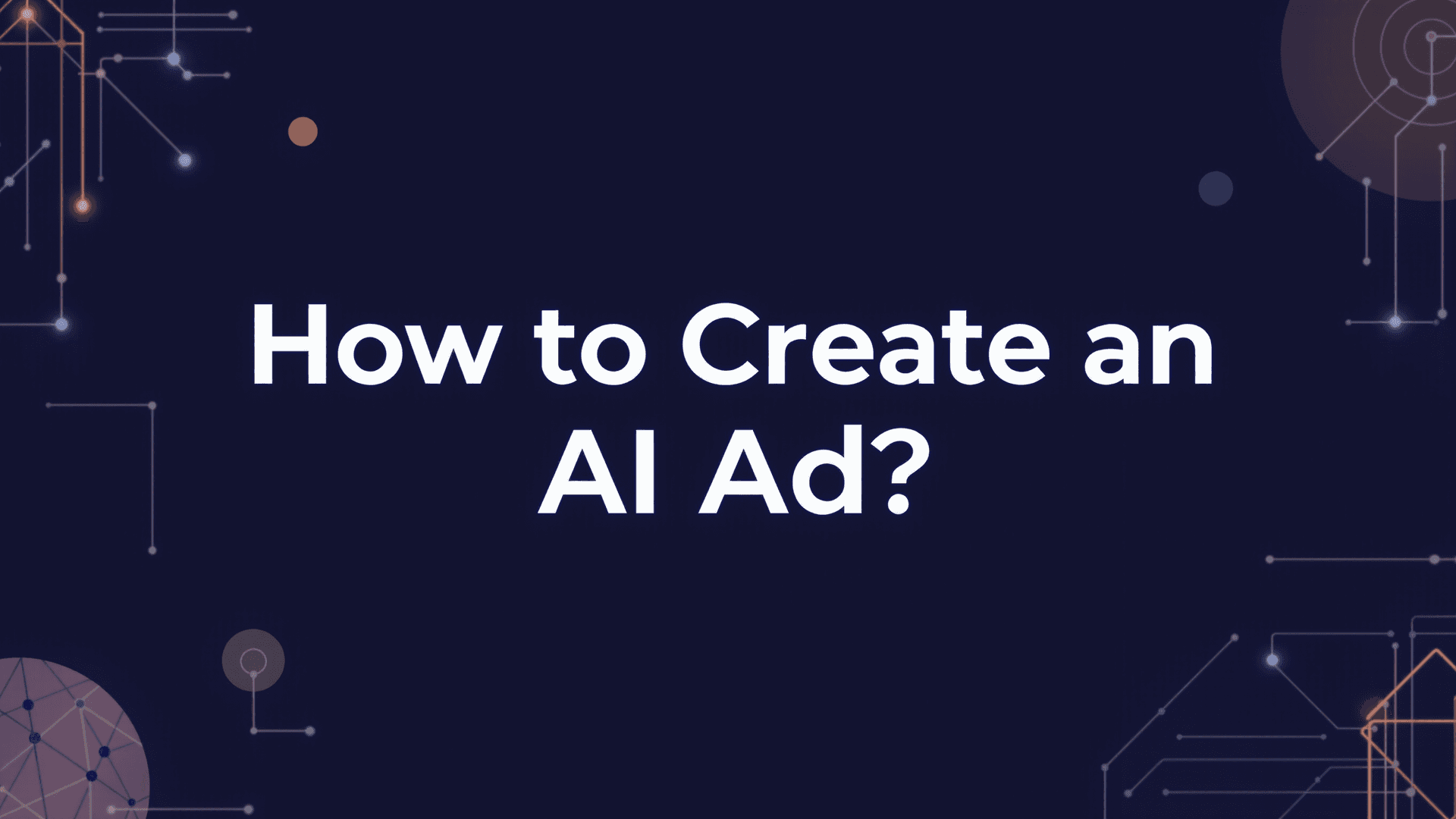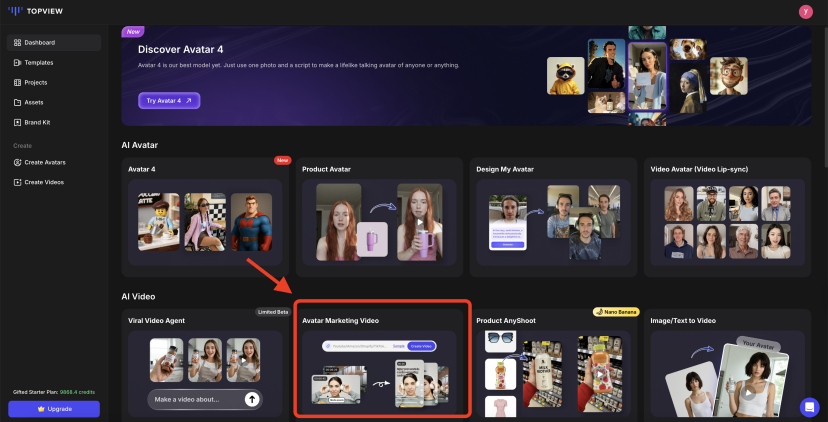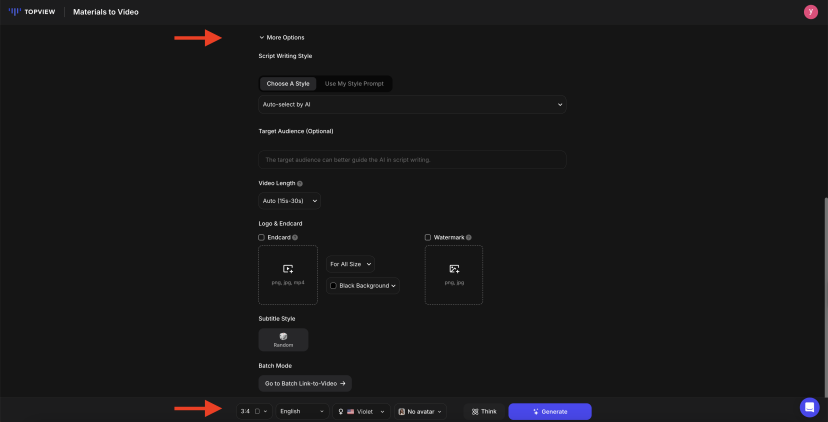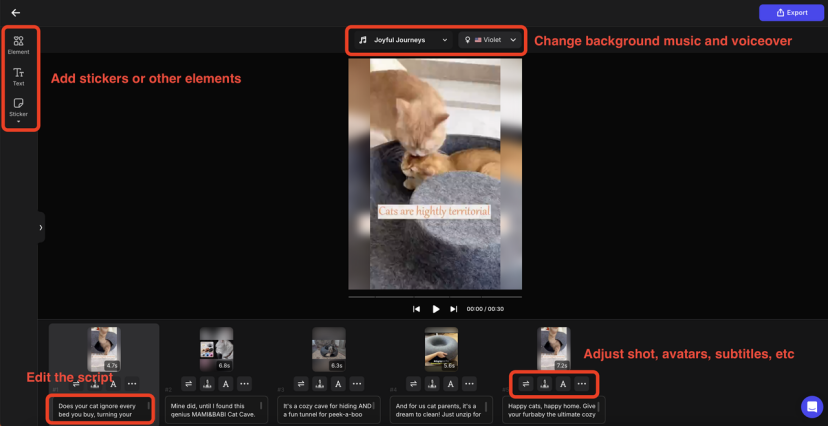How to create an AI ad?
Digital Marketing

If you've been paying attention to ads on your feed, you've probably noticed a change. Some look surprisingly polished for low-budget campaigns, while others feel almost too personal, as if they were written just for you.
In many cases, this is AI quietly working in the background -- writing the copy, generating the visuals, or even shaping who sees the ad and when.
In this article, I'll walk you through the essentials of creating an AI ad, step by step:
- What is an AI Ad?
- Steps to Create an AI Ad from Scratch
- How to Create an AI Ad with TopView
- Best Practices for Successful AI Ads
What is an AI Ad?
An AI ad is simply an ad created or shaped with the help of AI. But there's more to it than just using a new tool—it changes how ads are built and how they connect with people. Here's what it looks like in practice:
Smarter Copywriting
Instead of a single headline or slogan, AI can create dozens of variations in seconds. It can adjust the tone for different audiences — making one version more playful for younger viewers and another more professional for business readers.Faster Visuals and Video
What once required cameras, sets, and editing software can now be done with AI. Product shots, demo videos, and even animated explainers can be generated in hours instead of weeks. This means that brands of any size can test more creative ideas without burning through their budget.Personalization at Scale
AI doesn't just make ads—it tailors them. By analyzing data such as browsing behavior or interests, the same campaign can deliver slightly different versions to different people. It's advertising that feels closer to a one-on-one conversation than a broadcast.
So why does it all matter? Here's what AI advertising means for different players in the space:
- For businesses: faster production, lower costs, and more flexibility.
- For audiences: ads that feel more relevant—but also blur the line between authentic and automated.
- For marketers: a new challenge to balance machine efficiency with human creativity.
So when we talk about AI ads, we're really talking about a shift: from ads that talk to everyone at once, to ads that can adapt to everyone almost instantly.
Steps to Create an AI Ad from Scratch
Creating an AI ad doesn't mean just clicking a button and letting the machine do everything. It works best when you combine your strategy with the effectiveness of AI tools. Here's a step-by-step guide:
Define Your Goal and Audience
Start with clarity. Are you aiming for brand awareness, app downloads, or sales? Once you set the goal, specify your target audience as precisely as possible. AI can help — tools like audience insights platforms analyze user behavior and reveal patterns you might have overlooked.Craft a Core Message
AI needs direction. Summarize your product in one or two sentences. This core message will guide ad copy, visuals, and scripts. For example, a skincare brand might say, "gentle, science-backed care for sensitive skin." This line helps AI generate headlines, product images, and even video ideas.Choose the Right AI Tools
- Copywriting: Use ChatGPT or Copy.ai for headlines and captions.
- Visuals: Use MidJourney or Canva for images; Topview or Runway for simple videos.
- Voice/Audio: Use AI voiceover tools like Murf or ElevenLabs for storytelling.
Choose your tools based on your ad format—static, video, or carousel.
Generate Multiple Variations
Avoid settling for just one output. Let AI create different headlines, visuals, and calls to action. Test them in small batches to see what works best. AI's speed allows rapid experimentation without heavy resource use.Refine and Launch
AI handles about 80% of the work, but human judgment is crucial for the final touch. Review tone, branding, and cultural relevance before publishing. After launch, use analytics — often powered by AI — to track performance and inform future improvements.
How to Create an AI Ad with TopView
TopView makes it easy to turn simple inputs—like a product link, a photo, or even a short description—into a complete video ad. Here's a simplified way to use it:
Step 1: Start a Project
Log in and click "Avatar Marketing Video" to open a new video project from your dashboard.
Step 2: Upload Your Material
Add product photos, short clips, or paste a store link so the AI can automatically pull visuals and descriptions. You can also type a short prompt if you don't have assets ready.
Step 3: Set Style and Format
Select a video format, choose a theme, and add narration with an AI voice or your own recording. You can also add a logo or avatar.
Step 4: Edit and Finalize
TopView generates a draft in minutes. Tweak the script, adjust visuals, and add music before exporting. Once you're happy, download the finished video, and it's ready to publish.
Best Practices for Successful AI Ads
These four practices will help you turn AI output into campaigns that actually convert:
Start with Strong Inputs
The quality of what you feed into AI often determines the quality of what comes out. Clear prompts, high-resolution product images, and a focused value statement give the system a solid foundation. Vague or messy inputs usually lead to forgettable ads.Add Human Context Where It Matters
AI can generate visuals and scripts in seconds, but it has no living experience. Bring in human context by weaving in customer stories, unique product details, or cultural references. These touches are what make an ad feel relatable instead of generic.Focus on Attention, Not Just Output
It's easy to let AI churn out dozens of creatives, but more content doesn't always mean more impact. What matters is whether the first three seconds capture attention. Keep intros sharp, use strong visuals early, and put the key message ahead of the curve.Optimize for the Platform
Each channel has its own rhythm. A vertical, fast-paced video might shine on TikTok, while a clean image with a concise copy might work better on LinkedIn. Use AI to adapt your creativity for each platform rather than recycling the same ad everywhere.
Conclusion
AI has changed the way ads are made—faster production, smarter personalization, and endless room to test ideas. But tools alone aren't enough. The ads that stand out are the ones where human insight and AI efficiency work together.
If you're curious to try it for yourself, start simple. Take one product, feed it into TopView, and let the platform turn your raw material into a ready-to-launch video ad. It's one of the easiest ways to see what AI can do for your marketing today.

